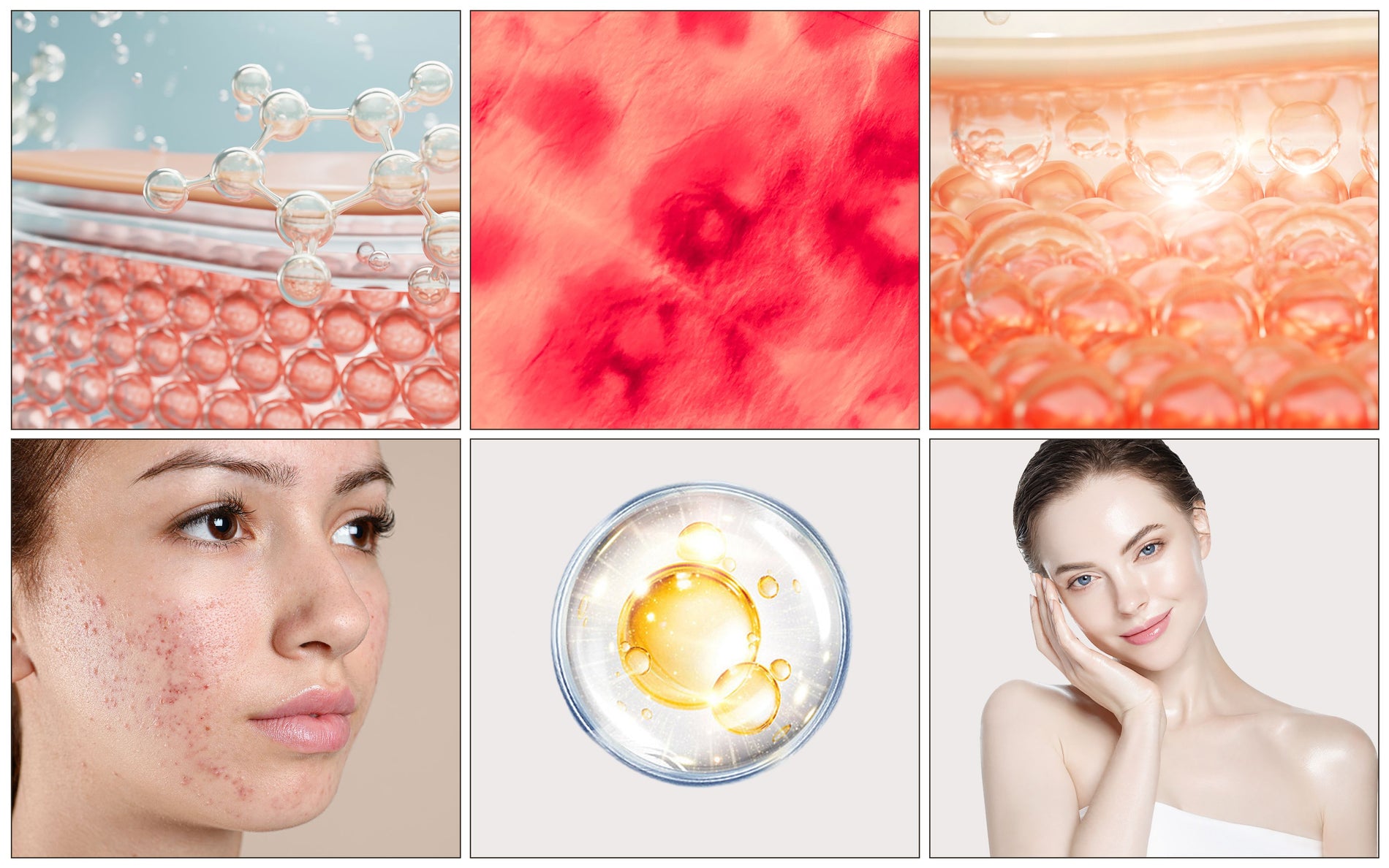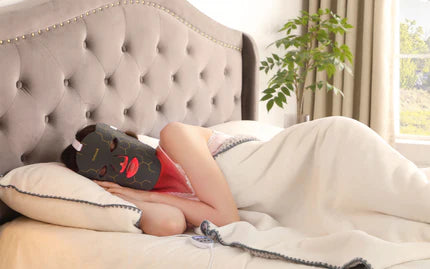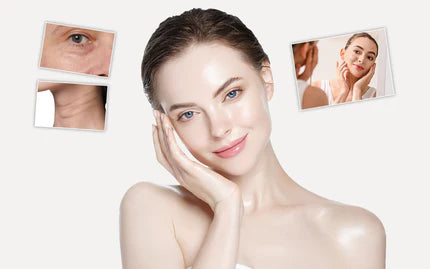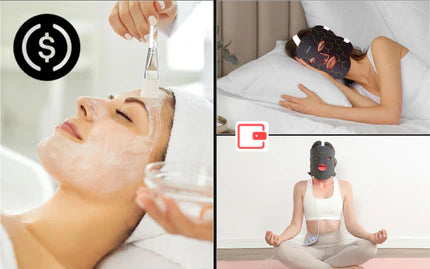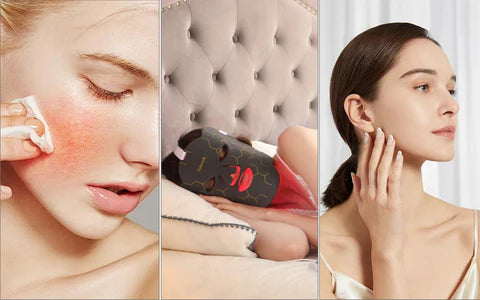Have you noticed dark patches on your skin that just don't seem to fade, no matter what you try? This common skin concern, known as hyperpigmentation, can be the unwelcome result of too much sun, hormonal changes, or even a past skin injury. But there's a gentle treatment gaining buzz for its ability to help: red light therapy (RLT). With no needles or surgery involved, RLT promises to soothe your skin back to a more even tone. In this article, we'll explore how this soothing red glow works its magic on stubborn spots, and whether it's the right fit for your skincare routine.

What is Hyperpigmentation and What Causes it?
What Is Hyperpigmentation?
Hyperpigmentation is when patches of skin become darker than the surrounding area. It's quite common and can happen to anyone, regardless of skin color or type. These dark spots are caused by an excess production of melanin, the pigment responsible for skin color. The reasons for this overproduction vary, but can include factors such as sun exposure, hormonal influences, certain medications, and inflammation or injury to the skin.
Why Does Hyperpigmentation Occur?
The causes of hyperpigmentation are diverse. Sun exposure is a significant factor because UV rays can trigger melanin production, leading to sunspots or age spots primarily on areas frequently exposed to the sun, like the face and hands. Hormonal changes, particularly during pregnancy or due to birth control, can cause melasma, a type of hyperpigmentation that often looks like large patches resembling a tan. Post-inflammatory hyperpigmentation is another type, usually arising after an injury or inflammation to the skin, such as acne, where the healing process leaves behind darkened skin.
What Are the Different Types of Hyperpigmentation?
Understanding the various forms of hyperpigmentation can help in addressing them appropriately:
-
Melasma: Often hormone-related, melasma appears as brown or gray-brown patches, typically on the face.
-
Sunspots: Also called liver spots or solar lentigines, these are common signs of sun damage found on areas most exposed to the sun.
-
Post-Inflammatory Hyperpigmentation (PIH): This occurs following skin injury or inflammation and shows up as flat spots of discoloration.
-
Freckles (Ephelides): These are small, flat brown marks that typically appear on the face and arms and are usually hereditary.
-
Hori's Nevus: Also known as "acquired bilateral nevus of Ota-like macules," this is a specific type of hyperpigmentation that's more common in individuals of Asian descent. It appears as blue-gray patches on the face, particularly on the cheeks.
-
Drug-Induced Hyperpigmentation: Some medications can cause increased pigmentation as a side effect, leading to darkening in various parts of the body.
Each type has its own set of triggers and may respond differently to treatments like red light therapy.

How Red Light Therapy Tackles Skin Hyperpigmentation
1. Stimulating Collagen Production
Collagen is an essential protein that gives skin its firmness and smoothness. Red Light Therapy has been shown to stimulate fibroblasts, which are the cells responsible for producing collagen. Increased collagen can lead to healthier skin structure, potentially diminishing the visibility of hyperpigmented spots by promoting a more even skin tone.
2. Regulating Melanocyte Activity
Melanocytes are specialized skin cells that produce melanin, the pigment that colors our skin. Hyperpigmentation occurs when these cells become overactive. Red light therapy may help regulate their activity, leading to a balanced distribution of melanin and the lightening of dark spots.
3. Enhancing Cellular Repair and Turnover
RLT can accelerate cellular repair mechanisms, facilitating the replacement of damaged, pigmented skin cells with new ones. This turnover is crucial in reducing the appearance of hyperpigmentation as it gradually replaces the darkened patches with fresh, normally pigmented skin.
4. Anti-Inflammatory Effects
Inflammation can often exacerbate or trigger hyperpigmentation, particularly PIH, where inflammation following an injury or acne leads to darkened skin. RLT's anti-inflammatory properties can reduce this response, helping to prevent and diminish PIH.
5. Improving Skin Barrier Function
A healthy skin barrier helps protect against environmental factors that can lead to discoloration. RLT can improve the function and resilience of the skin's barrier, offering another layer of defense against factors that contribute to hyperpigmentation.
6. Boosting Overall Skin Health
By enhancing blood flow and nutrient delivery to the skin, RLT supports overall skin health. Healthy skin is better equipped to fight off and recover from hyperpigmentation, maintaining a more even complexion overall.
7. Potential Synergy with Other Treatments
Often, RLT is most effective when used in conjunction with other treatments. For instance, it may enhance the efficacy of topical creams designed to lighten hyperpigmentation by improving the skin's ability to absorb and respond to these products.
The effectiveness of red light therapy can vary from person to person. Factors like the type and severity of hyperpigmentation, skin type, and frequency of use all play a role in the results one can expect from RLT. For this reason, anyone considering RLT for hyperpigmentation should consult with a dermatologist to determine if this treatment is appropriate for their specific condition.
Can Red Light Therapy Fade Different Types of Dark Spots?
Red light therapy (RLT) has been studied for its potential in treating various skin conditions, including different forms of hyperpigmentation. Here's how RLT might be used to target specific types:
Melasma and Red Light Therapy
Melasma is challenging to treat due to its hormonal links. RLT may help by promoting collagen production and improving skin texture, which can sometimes reduce the contrast between the melasma patches and the surrounding skin. However, because melasma is hormone-related, it often requires a multi-faceted treatment approach, including topical agents, sun protection, and potentially lifestyle adjustments.
Sunspots Responding to Red Light
Sunspots, resulting from cumulative sun exposure, could potentially respond well to RLT. The therapy may improve these spots by enhancing cell turnover and reducing the overproduction of melanin in the affected areas. Consistent use of RLT combined with strict sun protection measures may yield improvements in the appearance of sun-damaged skin.
Post-Inflammatory Hyperpigmentation (PIH)
For PIH, red light's anti-inflammatory properties may play a significant role. By calming inflammation, RLT may prevent the worsening of PIH and support the healing process. It's essential, however, to address the underlying cause of inflammation simultaneously, whether it's acne management or avoiding skin irritants.
Freckles and Red Light Treatment
Freckles may lighten with consistent use of RLT due to its possible regulatory effect on melanocyte activity. Nonetheless, as freckles are typically genetic and exacerbated by sun exposure, maintaining rigorous sun protection is crucial alongside RLT.
Hori's Nevus and RLT
The treatment of Hori's Nevus with RLT is less clear as this condition is deeper within the skin than other types of hyperpigmentation. While RLT might offer some benefits through its general skin-enhancing effects, more targeted treatments such as lasers are often used for this type of pigmentation.
Drug-Induced Hyperpigmentation Management
RLT could assist in lightening areas affected by drug-induced hyperpigmentation by supporting skin renewal and reducing excess pigmentation over time. As always, if medication is the cause, consulting with a healthcare provider for potential alternatives is also advised to prevent further darkening.
How Do You Use Red Light Therapy Masks to Tackle Hyperpigmentation?
Using a red light therapy (RLT) mask can be a simple and effective way to target hyperpigmentation. If you're looking to incorporate one into your skincare routine, here are some steps and tips to help you use it effectively:

Step 1: Choose the Right Mask
Select an RLT mask that's FDA-approved and emits the correct wavelength of light recommended for treating hyperpigmentation (typically around 630-660 nanometers). Look for masks with proven results and positive user reviews.
Step 2: Read the Instructions
Before diving in, read the manufacturer's instructions carefully. Each mask may have specific guidelines on how to use it for optimal results, including the duration of each session and the total number of sessions per week.
Step 3: Prep Your Skin
Cleanse your skin thoroughly to remove any makeup, oils, or dirt that could interfere with the light. Ensure your face is completely dry, as wet skin can reflect light and reduce effectiveness.
Step 4: Start Your Session
Put the mask on, making sure it fits snugly against your skin without any gaps. Turn it on and relax while the light does its work. Sessions generally last between 10 to 20 minutes, depending on your device and skin sensitivity.
Step 5: Combine with Skincare Products
After using the mask, apply skincare products that are formulated to address hyperpigmentation. Thanks to the RLT, your skin might be more receptive to absorbing these beneficial ingredients.
Step 6: Be Consistent
For best results, use your RLT mask consistently. Many users report seeing gradual improvements over several weeks or months.
Step 7: Protect Your Progress
Directly after RLT, your skin may be more susceptible to sun damage, which can worsen hyperpigmentation. Apply a high-SPF, broad-spectrum sunscreen every day, reapplying every two hours when exposed to sunlight.
Step 8: Evaluate Your Results
Keep track of your progress by taking regular photos in similar lighting conditions. This will help you determine if the mask is working for you.
Tips for Enhanced Effectiveness:
-
Hydrate: Drink plenty of water before and after your RLT sessions to help your skin stay hydrated and responsive.
-
Avoid Irritants: Stay away from potential irritants that may cause inflammation and exacerbate hyperpigmentation, such as harsh scrubs or certain chemicals in skincare products.
-
Get Enough Sleep: Give your skin time to repair itself by getting enough restful sleep - your skin does its best healing work at night.
-
Consult with Professionals: If you're unsure about how to incorporate RLT into your routine, don't hesitate to consult with a dermatologist or a licensed esthetician.
Using an RLT mask as part of your regular skincare routine could gradually and gently help fade dark spots and even out skin tone. It's all about consistency, care, and giving your skin the attention it needs to look its best.
Time to Say Goodbye to Dark Spots: Red Light Therapy Can Help
Red light therapy could be your ticket to easing those dark patches we call hyperpigmentation. It's easy, it doesn't hurt, and there's no downtime. When you pair it up with your favorite skin creams or treatments, it might just help fade those spots away. But remember, good things take time, so be patient and keep at it. And before trying anything new, it's always a smart move to talk to a skincare pro. They'll help you figure out if red light therapy should be your go-to or just part of your team in the journey to clearer skin. Ready to give your skin some love? Let red light therapy join your skincare lineup.
Have you noticed dark patches on your skin that just don't seem to fade, no matter what you try? This common skin concern, known as hyperpigmentation, can be the unwelcome result of too much sun, hormonal changes, or even a past skin injury. But there's a gentle treatment gaining buzz for its ability to help: red light therapy (RLT). With no needles or surgery involved, RLT promises to soothe your skin back to a more even tone. In this article, we'll explore how this soothing red glow works its magic on stubborn spots, and whether it's the right fit for your skincare routine.
